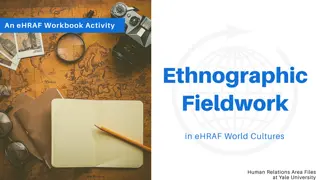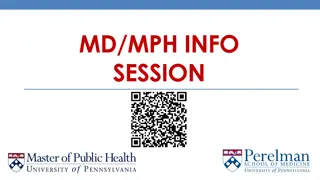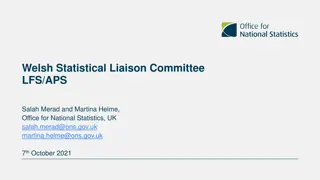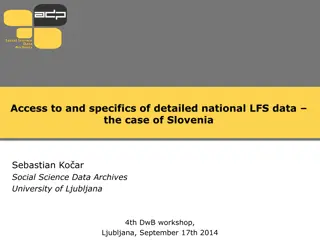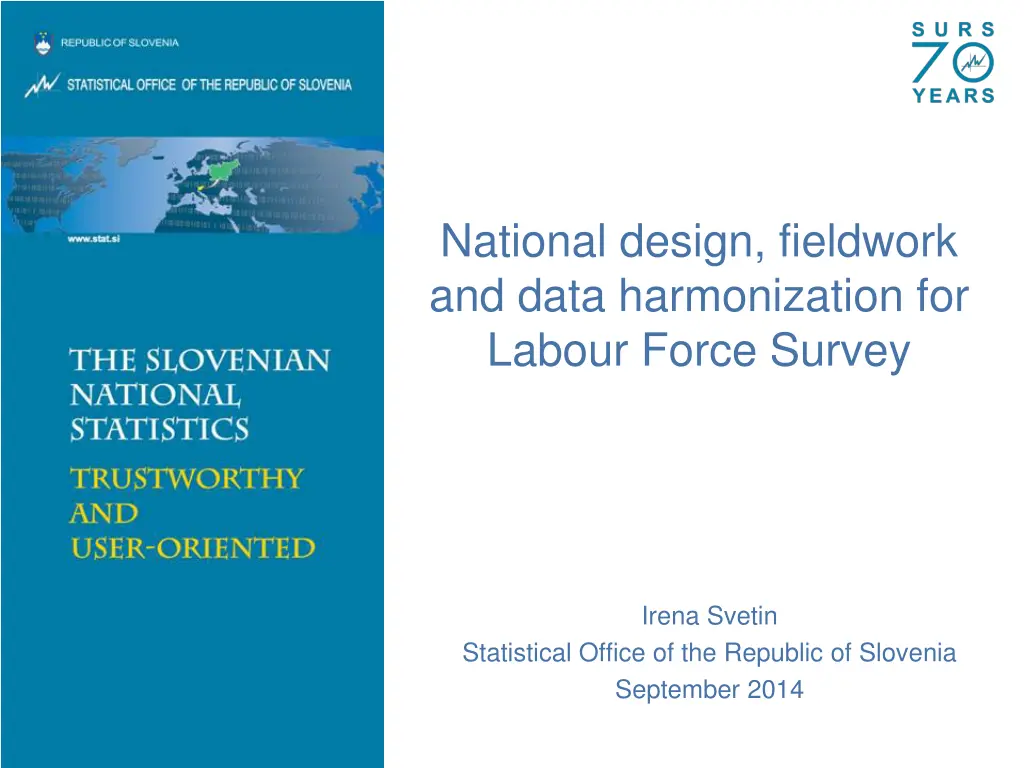
Data Harmonization and Collection Process for Labour Force Survey
Explore the detailed process of data collection, fieldwork, and harmonization for the Labour Force Survey conducted by the Statistical Office of the Republic of Slovenia in September 2014. Learn about sample details, interview instructions, data transmission, and more.
Download Presentation

Please find below an Image/Link to download the presentation.
The content on the website is provided AS IS for your information and personal use only. It may not be sold, licensed, or shared on other websites without obtaining consent from the author. If you encounter any issues during the download, it is possible that the publisher has removed the file from their server.
You are allowed to download the files provided on this website for personal or commercial use, subject to the condition that they are used lawfully. All files are the property of their respective owners.
The content on the website is provided AS IS for your information and personal use only. It may not be sold, licensed, or shared on other websites without obtaining consent from the author.
E N D
Presentation Transcript
National design, fieldwork and data harmonization for Labour Force Survey Irena Svetin Statistical Office of the Republic of Slovenia September 2014
Content General overview Process of the data collection Ad hoc modules Slovenian vs. Eurostat database Work with the microdata
General overview History: - 1989 1992: pilot - 1993 1996: yearly - 1997Q2 onwards: quarterly Sample: 7,000 households 16,000 persons Stratified simple random sample Stratum allocation proportional to population distribution by NUTS3 regions (12) and type of settlement (5)
Source: Central Register of Population Panel: 3-1-2 Non response rate (2013): 22% 1st wave: 33% 2nd 5th wave: 16% Programme for data entry: Blaise CAPI: 30 interviewers CATI: 10 interviewers Letters + leaflets
Instructions for the interviewers Controlling system Field interviewers 120 inteviews per quarter Telephone interviewers 20 25 interviews per day Duration: field: 12 min telephone :5 min Costs: 200,000 EUR per year
Process of the data collection Sample Time and geographic distribution Lists of selected households Sending out letters and leaflets Questionnaire in line with the Eurostat recommendations/requierements taking into account national specificities questions for national needs almost 200 questions app. 10 blocks of questions
Filters/routing Data transmission Dependent interviewing joining database with the data from previous quarters Imputation (hot deck method) Data editing
Weights (due to unequal probability of selection and nonresponse): post-stratification NUTS3 regions, age groups, sex) special variable Publishing of the data: First release Database on the WWW Data transmission to Eurostat Yearly: PIN, matching with the tax register
Ad hoc modules Special set of questions Defined by EC, Eurostat, member states 3-yearly plan Part of the core questionnaire The same process as for the regular part Validation programmes
Slovenian vs. Eurostat database Translation: national questions ES variables Not of sufficient quality (complex variables and filters) Verification programmes Data sent on time Comparison of results Rules for the protection (aggregated data and microdata)
Work with the microdata Cooperation between data user and data provider Protected file Derived variables Tools Important: good knowledge about the phenomenon in question, population and definitions Terminology Interpretation of the data Usage of the signs for less reliable data Comparison of the data (different sources)


